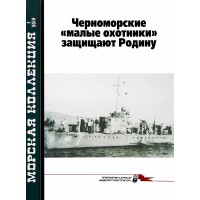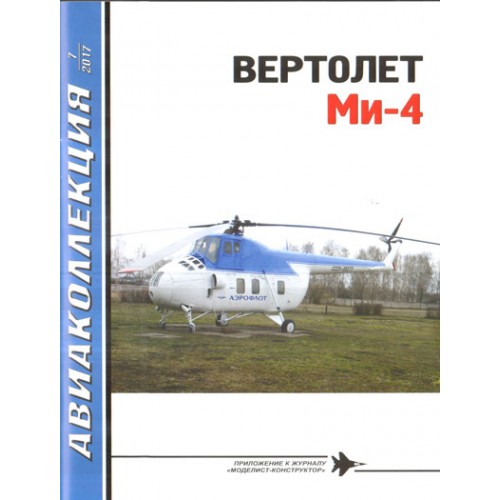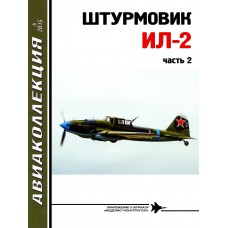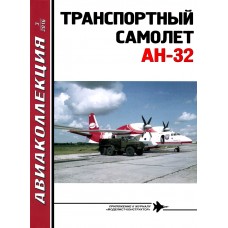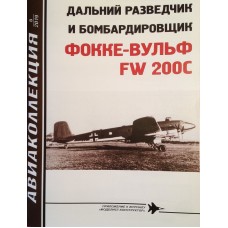AKL-201707 AviaCollection 2017/7 Mil Mi-4 Hound Military and Civil Transport Helicopter. Photos, schemes, colour pictures. 32 pages, soft cover, text in Russian.
The Mil Mi-4 (USAF/DoD reporting name "Type 36", NATO reporting name "Hound") was a Soviet transport helicopter that served in both military and civilian roles.
Contents:
The creation of the helicopter
Mass production and modification
... Search-and-rescue helicopters
... Mi-4АV armed versions based on the Mi-4A
... Mi-4M anti-submarine modification, fitted with a search radar complex SPRS-1 (Kurs-M) with operator in underfuselage gun turret
... Mi-4MR upgraded version of Mi-4VM
... Search-and-destroy anti-submarine complex
... Mi-4MT torpedo-carrying ASW (anti-submarine warfare) attack helicopter
... Mi-4BT minesweeper helicopter with floats
... Other modifications
... Helicopters for civil aviation
... Mi-4P Passenger helicopter
... Mi-4S Salon VIP transport helicopter
Technical details of Mi-4A military-transport helicopter
Operation and combat use
Overall rating
Colouring and symbols
THE CREATION OF THE HELICOPTER
The forties of the last century went down in world history not only as the period of the bloodiest war, but also as the beginning of the mass operation of a new vehicle - a helicopter. The greatest success in this field was then achieved by the Americans, especially the Sikorsky company. Rejected by Soviet Russia, the designer quickly found himself on the other side of the Atlantic and began to create the most real masterpieces of helicopter.
In the Soviet Union, much attention was also paid to helicopters, but the outbreak of the Great Patriotic War greatly slowed down work in this direction. Then it was possible to continue work only on the twin-screw "Omega" I.P. Bratukhin. However, faced with a number of insurmountable difficulties, mainly with the strongest vibrations, we spent a lot of time fighting them, but did not achieve success.
In the late 1940s. in our country, one of the leaders in the field of helicopter construction was the team of M.L. Mile. True, this was not without the intervention of the Ministry of Aviation Industry (MAP) and the government, who decided to launch into serial production the GM-1 (Mi-1) helicopter instead of the Yak-100, which showed the best results during state tests.
Following the Mi-1, other proposals appeared, including a project of a multi-seat helicopter with a 1000-horsepower ASh-62 engine (modified in an unknown way) and an M-3 longitudinal scheme with an M-226 engine, which was created on the basis of the same ASh-62. The flight weight of the M-3 was estimated at 3100 kg.
It was only possible to implement the VD-12 project (the designation V-12 is also found), the future Mi-4.
The reason for the intensification of work in the field of helicopter construction was the war in Korea, where the Americans began to widely use helicopters to solve a wide variety of tasks. Naturally, we shouldn't have lagged behind. As a result, on October 5, 1951, a joint resolution of the Central Committee of the CPSU and the government of the USSR was issued on the creation of an airborne transport helicopter.
In addition to 12 soldiers, the vehicle was supposed to carry in the fuselage: two 82 mm mortars, ten soldiers and seven boxes of mines; a 57 mm cannon, three soldiers and a box of cartridges; two M-72 motorcycles with sidecars and five paratroopers, as well as GAZ-67B or GAZ-69 vehicles.
At the same time, the commercial load was set at least 1200 kg in the normal version and 1600 kg in the reloading version. In addition, the helicopter should have been equipped with a NUV-1 bow rifle mount with a TKB-481 (A-12.7) machine gun of 12.7 mm caliber designed by N.M. Afanasyev.
For the domestic helicopter industry, this was a serious task, especially since the machine should have been presented to the customer no later than a year later.
For a single-rotor helicopter designed to transport troops and military equipment, the choice of layouts was small. The most suitable in those years were options with a side arrangement of two engines or with one piston engine in the bow, in front of the cargo compartment. The choice fell on the latter, according to the helicopter scheme of I.I. Sikorsky S-55. It remains to resolve the issue with the type of power plant.
In the early 1950s. in the Soviet Union, the most powerful helicopter engine was the AI-26, various modifications of which were installed on I.P. Bratukhina, A.S. Yakovleva and M.L. Mile. However, even two AI-26Vs did not allow building a transport vehicle in full compliance with the specified tactical and technical requirements.
At the same time, the USSR produced the 1850-strong ASh-82FN engine, which had been in operation for over ten years, was comprehensively tested, had an acceptable resource and reliability. But you can't put an airplane engine on a helicopter so easily. For him, it was necessary to create a forced cooling device and a gearbox for transferring rotation to the main and tail rotor. Design Bureau A.D. Shvetsova. The result is the ASh-82V helicopter engine with a takeoff power of 1,700 hp. and nominal - 1530 hp. at an altitude of 1550 m.
At the beginning of 1952, the model of the helicopter was presented to the customer. The first thing that caught my eye was the mufflers, which became an extension of the engine exhaust pipes. We did this to reduce the noise level, especially in the gunner's cockpit.
The prototype VD-12 was built in the spring of 1952 and in April began its ground tests, which immediately revealed the flutter of the rotor blades. Only after installing anti-flutter weights on them on June 3, 1952, test pilot V.V. Vinnitsky (co-pilot G.V. Alferov, leading engineer G.V. Remezov) made the first flight on VD-12. It so happened that Vsevolod Vladimirovich remained the leading test pilot of the helicopter until its transfer for state tests.
The spacious cargo compartment of the helicopter, in addition to the cargo specified in the assignment, also made it possible to transport SD-57 self-propelled guns.
State tests of the VD-12 jointly with the customer at the Air Force Research Institute, both in cargo and amphibious versions, began on October 3 and ended by mid-November 1952.
AKL-201707 AviaCollection 2017/7 Mil Mi-4 Hound Military and Civil Transport Helicopter
- Brand: AviaCollection / AviaKollektsia
- Product Code: AKL-201707 In Stock
-
$3.90
Available Options
Look at these products too:
AKL-201504 AviaKollektsia 4 2015: Ilyushin Il-2 Sturmovik part 2
Photos, schemes, colour pictures. 32 pages, soft cover, text in Russian...
$3.90
AKL-201603 AviaKollektsia 3 2016: Antonov An-32 Cline Twin-Engined Turboprop Military Transport Aircraft
Photos, schemes, colour pictures. 32 pages, soft cover, text in Russian.Contents:The creationMass pr..
$3.90
Tags: aviation



